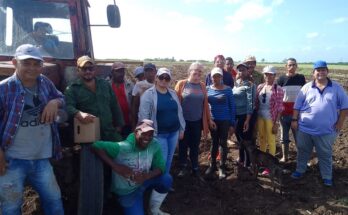On August 30, 1981, the Floridian internationalist combatant Sergio Canales Selpa, a press photojournalist, war correspondent and chronicler of revolutionary exploits who was born in Florida, Camagüey, in May 1938, a city where he was a worker at the Agramonte power plant, while helping his father in his job as a shoemaker, died of a heart attack.
He had his first contact with photography in his hometown where he worked as an apprentice assistant in the photographic studio “Pino”; under the red safety light and the darkroom buckets, preparing developing and printing chemicals, he discovered the secrets of the trade that later became his profession.
He joins the M-26-7 cell in 1956 just when he learns the trade of electrician and goes to work in Nicaro, Oriente, where his revolutionary thought and action is awakened, and because of his active link to the cause, the authorities make him leave the town.
He returned to Florida where the revolutionary actions increased, and after the landing of the Granma and the news that Fidel was fighting in the Sierra Maestra he tried to join the mountains, but his superiors considered that his presence in the city was vital, because Canales Selpa served as liaison of the cell of the 26th of July Movement to transfer gunpowder, clothes and money to nearby towns.
Once the leaders of the revolutionary movement in Florida were arrested, he moved to Cascorro to avoid police persecution; he worked as an electrician and after gaining the trust of a sergeant named Pubillones, whose car he repaired, he used the car to transport essential supplies for the struggle; when his activities were discovered, he was arrested, locked up in one of the dungeons of the barracks and tortured; he saved his life because of the popular protests and demands.
In January 1959 he joined the 13th Ignacio Agramonte column led by Victor Mora as a soldier; he later joined the Revolutionary War Navy; since 1960 he worked for the Verde Olivo magazine and together with journalist Luis Mac Beath Alvarez he voluntarily left for the Escambray area, where he captured images of the ammunition, medicine and food being thrown to the rebels; during the mercenary invasion of Playa Giron he fought with his camera and rifle, and collected useful information for operational purposes.
In journalistic coverage, the Floridian Sergio Canales Selpa visited the former USSR, Portugal, Mozambique, Tanzania, Kenya, Peru, Vietnam and Angola; in his incessant journalistic work, he made several photo reports on the vanguard workers’ brigades to our macheteros and peasants; his graphics cover the work of the military units, the work of the Party in the FAR and the graduation ceremonies of the different academies.
Becoming historical documents, the photos taken by Canales reflect transcendental moments of the struggle of an entire people to maintain the Revolution, among them are the moment when Fidel Castro jumped from the tank during the mercenary aggression for Playa Giron.





